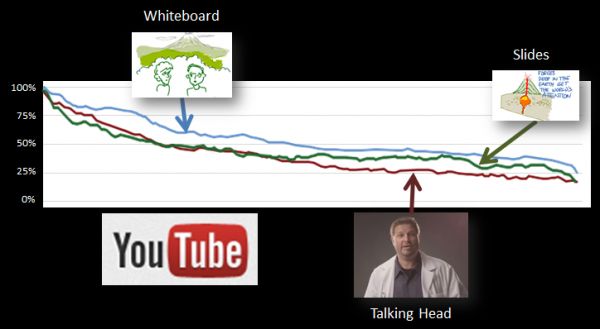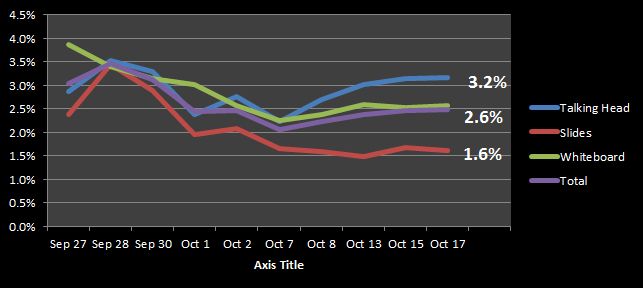The brilliant minds over at Blog Growth posed an important question recently; What’s the best price for your products?
While consumers think prices are decided arbitrarily, there is a lot of work that goes into determining the price point for a product.
Check out the amazing infographic Blog Growth put together to break down the science of pricing.

To read the whole post, check out Blog Growth.
Let’s be honest; Brian is a bit biased on this subject. After all, he’s not just a conversion optimizer, he’s THE Conversion Scientist. But that doesn’t mean he isn’t right.
If you are currently spending money on a PPC campaign, there is no reason not to use a part of that budget to bring in a conversion optimizer.
PPC is all about conversion; how many people are seeing the ad, and how many clicked. What if you could spend the exact same amount of money on PPC and, with just a few tweaks from a conversion optimizer, you could increase the number of clicks without paying for larger volume (and less qualified) traffic?
By focusing on Average Order Value and Revenue Per Click instead of just Conversion Rate, a conversion optimizer can help you make sure your PPC budget is being spent wisely and giving you maximum sales for your money.
Read Brian’s entire article on Search Engine Land.
In the world of sales funnels, acronyms rule. There’s the classic AIDA (Attention, Interest, Desire, Action) and the popular AILSB from Brad Geddes (Awareness, Interest, Learn, Shop, Buy). People have reversed, flipped, twisted, and backflipped the formulas, but for the most part, they stay pretty close to that theme. Surely you think there’s no need for another model. Well Brian does; so he created one.
Brian’s model is TEES, which stands for the following:
Trigger – What is happening in a visitor’s life that has caused them to search your keyword?
Empathy – Helping a visitor understand that you can help them with the problem that brought them to your site.
Education – Help the customer understand their problem.
Solution – Providing the proof that you can solve their problem, and prompt them to buy.
To learn more about Brian’s new funnel, check out his column on Search Engine Land.
Podcast: Play in new window | Download
DownloadGoogle Analytics Tips: 10 Data Analysis Strategies That Pay Off Big!
Comments:
@Avinash Kaushik has a unique ability to make analytics human. I don’t share many analytics posts with you, as I don’t want to scare you off. But I fear I may be underestimating you.
Here are ten very good ways to get to know your visitors through Google Analytics. I believe you will be energized and excited if you open these reports in your own Google Analytics account.
This is a great way to start appreciating your visitors in ways that will make your site more successful.
by: Brian Massey
Karon Thackston: Phrasing Discount Offers for Maximum Results by Getentrepreneurial.com
Comments:
How you phrase a discount is a powerful way to increase conversions. Some visitors do not like to do math, or will do it wrong. Therefore, offering 20% off is less effective than save $18. However, high discounts (50%, 90%) may draw buyers more powerfully than the dollar value.
You have to find out for yourself.
Karon offers a nice list of alternatives and some links to research for your enjoyment.
by: Brian Massey
The Top 5 Website UX Trends of 2012 | UX Magazine
Comments:
While good UX (User eXperience) does not always translate into higher conversion rates or revenue per visit (RPV), these trends point to excellent hypotheses for what MIGHT increase the performance of your site.
- Single Page Sites: Simplicity is often a great way to increase conversion rates
- Infinite scrolling: Consider this for category pages. I haven’t tested this yet.
- Persistent top nav: I am very curious to see if this increases CR and RPV. Let me know if you’ve tested it.
- Web 2.0 Aesthetics: I hope this includes the rotating banners at the top of so many sites.
- Typography Returns: Your message is the most important part of your conversion optimization plan. Typography can help… or hurt
by: Brian Massey
Even though the election season is over, I’ve opted to extend the debate and move it into the realm of online marketing. In 4 Anti-Science Marketing Attitudes That Keep Us In The Stone Ages I compare the anti-science efforts used by politicians and their campaigns to the anti-science efforts stacked against you, my fellow marketer.
The most egregious of the anti-science foes is the person who actively campaigns against data-driven marketing, using any of several excuses. You may have heard them yourself.
- Everybody else is doing it.
- It’s not “on brand.”
- I wouldn’t respond to that!
- It’s not creative enough.
- Give visitors the facts and they’ll figure the rest out.
- We sell to everyone!
Read the entire article at Search Engine Land, or listen to the article via the Conversion Scientist Podcast.
Listen | Download | Subscribe
[bookpromo]
How does engagement affect conversion rates? Could it impact them positively or negatively? Is it possible to increase conversions by decreasing engagement?
We’ve just finished some very interesting research here at Conversion Sciences labs, and we love it when our deeply held beliefs get blown out of the water.
It’s happened again.
Most of us assume that if our pages are “engaging” to visitors, that they are more likely to convert to leads or sales. If they are engaged, they have more time to take action. If they are engaged, they will truly understand our value and become a lead or a customer.
Look at the following graph of three videos. These three different videos appeared on three otherwise identical landing pages. The graph is “Viewer Attention” as is recorded by YouTube. Basically, these graphs tell us how many visitors were still watching at any point in the video. It tells us how engaging a video is.

YouTube’s Viewer Attention metric would predict that “talking head” video would deliver the lowest conversion rate. In fact, it is the highest converting style of video. In this case, engagement doesn’t predict conversion.
Clearly, we would expect whiteboard style video to be the highest converting video, since viewers are more engaged for the entire length of the video. We expect slides to be almost as successful. However, we expect plain old talking head videos to perform poorly.
Now take a look at the following graph. This is a graph of the conversion rates of the same videos.
This graph tells us that plain old talking head video is getting more visitors to click on our call-to-action button. This style of video is almost twice as likely to convert a visitor than the slide-style video found in most webinars.
How Does Engagement Affect Conversion Rates?
Clearly, engagement doesn’t predict conversion in this case. Here, engagement is actually distraction.
Learn more about the relationship between engagement, distraction and conversion in my article Can You Really Increase Conversions By Decreasing Engagement?
I think you’ll be surprised by what you will learn.
[bookpromo]

I just got back from Content Marketing World and wanted to share my notes from one of the presentations with you.
Andrew Davis gave the audience at nice overview of the concepts he champions in his new book Brandscaping, concepts that can fundamentally change the success of your brand today and in the coming years.
Here is my Instagraph of his presentation.
Click to Enlarge
Everyone wants to be the first listing on page one of Google for the terms that define their business. Many businesses pay dearly to maintain that position.
But what if this wasn’t necessary to get the attention of searchers? What if your third-place ranking was as powerful as being at the top of the page in terms of clicks?
This is the promise of video. Properly tagged with Open Graph meta tags, you can get a thumbnail of your video onto search pages and have more visual impact than the top listings.
[jwplayer config=”Autostart” mediaid=”2032″]
Implementing Open Graph for Video
The details can be found in my new column Use Open Graph To Get Video Thumbnails Into Your Search Results on Search Engine Land. Fellow Conversion Scientist Joel Harvey tells us his secret weapon for getting video thumbnails into search results.
If you’re curious, the Open Graph tags used on this page are:
<meta property=’og:video:width’ content=’640′ />
<meta property=’og:video:height’ content=’360′ />
<meta property=’og:video:type’ content=’application/x-shockwave-flash’ />
<meta property=’og:title’ content=’Ooooh! Video’ />
<meta property=’og:description’ content=’Use Open Graph To Get Video Thumbnails Into Your Search Results’ />
<meta property=’og:image’ content=’/wp-content/uploads/2012/07/Open-Graph-Video-thumb.png’ />
<meta property=’og:video’ content=’/wp-content/uploads/jw-player-plugin-for-wordpress/player/player.swf?file=/wp-content/uploads/2012/07/Open-Graph-Video-SEO.mp4&controlbar=none&dock=false&autostart=true&height=360&width=640′ />
Listen to the Article:
[bookpromo]
There’s nothing like an arch nemesis to get the “good guys” motivated and engaged in a quest. If you are trying to get your conversion project approved, consider finding a competitor who seems to be making all the right moves.
This is the topic of my new column on Search Engine Land How To Get Management Excited About Conversion Optimization. In it I talk about the power of an enemy.
I discuss the components of your competitor story, including appearing to have greater resources than you, appearing to be smart, and appearing to have an evil plan.
I introduce you to some Spy Equipment that tells you just how smart they are.
I show you how to tell if they are they optimizing their site, using analytics, page analyzers or testing packages.
You can also tell if they are using ratings and reviews, recommendation engine or video players.
I tell you how you can catch them monologuing, revealing their secrets.
Finally, I show you how to cast them in their best light, making them more threatening.
 |
 |
With a little research, you can clearly draw a picture of your competition as an evil genius, working to take food from the mouths of your family. You can develop the story of the powerful competitor using some spy equipment, their public “bragging,” and some page analysis tools. This will make your conversion project seem more critical to the survival of your business.
 These are the stories that caught the eye of The Conversion Scientist last few weeks. If you are a curious marketer looking to learn more about conversion, please subscribe my weekly recommended reading list, For Further Study.
These are the stories that caught the eye of The Conversion Scientist last few weeks. If you are a curious marketer looking to learn more about conversion, please subscribe my weekly recommended reading list, For Further Study.
Mobile Site or Mobile App: Which Should You Build First? [INFOGRAPHIC]
I only touch on the issue of Mobile Apps in my new book Your Customer Creation Equation. So I’m happy to share this very helpful infographic on Mobile websites vs. Mobile apps.
Is it just me, or is it clear that mobile websites are the way to go (except in extreme situations)?
Buddy Media CEO Makes Unforgettable ‘We Got Bought’ Video
How is this touching video different from your corporate press release? In every way. “The Human Voice is Unmistakeable.” In Your Customer Creation Equation (coming in June) I make the point that your business should be using the content it naturally makes to feed your audience.
Clearly Michael Lazerow is good with an iPad and Keynote.
What are you good with?
How to Build and Operate a Content Marketing Machine | SEOmoz
It is a great sign that @SEOMoz included Conversion in their grand plan for Content Marketing. This infograph considers conversion a key component of content marketing, but in my upcoming book on conversion I make content a key part of conversion marketing. Different approaches, same result.
Enjoy the Infograph.








